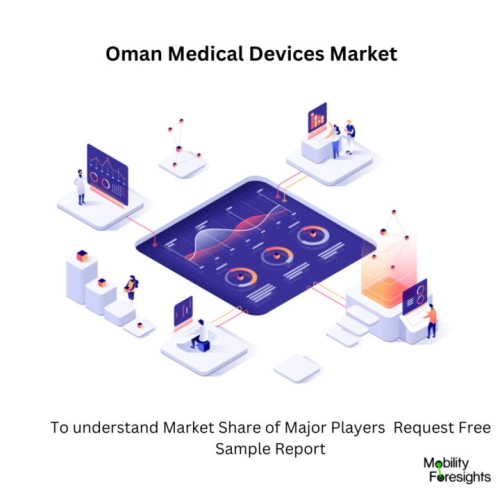
- Get in Touch with Us

Last Updated: Apr 25, 2025 | Study Period: 2024-2030
Medical device regulation in Oman is handled by the Ministry of Health's Directorate General for Pharmaceutical Affairs and Drug Control. Oman accepts all grading schemes. Up to two years may elapse during the approval procedure. Due to the acceleration of the economic recovery, the medical device market in Oman will rise modestly, in the mid-single digits.
The market will profit from high energy prices, which will result in a surplus on Oman's current account, as well as diversification initiatives supporting the expansion of non-hydrocarbon exports and a rebounding tourism industry.
The speed of economic recovery will start to slow down, though, as fiscal constraints tighten and hydrocarbon production slows, creating downside risks for the medical device sector. This includes building new hospitals, which will promote the growth of the medical device market during the ensuing years and open doors for medical device suppliers.

The Oman Medical Devices market accounted for $XX Billion in 2023 and is anticipated to reach $XX Billion by 2030, registering a CAGR of XX% from 2024 to 2030.
A major manufacturer of medical equipment, Align Technology, has increased its presence in the Oman market.
Orthodontists in Oman will now have access to Invisalign training so they may provide patients clear aligner therapy. To enhance patient outcomes and workplace productivity, they will be able to employ the iTero intraoral scanner to digitise both their own practices and end-to-end orthodontic and restorative procedures.
Align Technology's general manager for the Middle East and Africa stated that they are incredibly happy to be introducing their full line of digital goods to the Oman market. This market expansion demonstrates their dedication to provide their doctors with the top technologies in the Middle East.
This significant accomplishment establishes their dominance throughout the whole GCC region. It will also pave the way for a larger pool of doctors to have the equipment they require to digitise their practises, future-proof them, and provide their patients with care that is more technologically sophisticated and effective.
| Sl no | Topic |
| 1 | Market Segmentation |
| 2 | Scope of the report |
| 3 | Abbreviations |
| 4 | Research Methodology |
| 5 | Executive Summary |
| 6 | Introduction |
| 7 | Insights from Industry stakeholders |
| 8 | Cost breakdown of Product by sub-components and average profit margin |
| 9 | Disruptive innovation in the Industry |
| 10 | Technology trends in the Industry |
| 11 | Consumer trends in the industry |
| 12 | Recent Production Milestones |
| 13 | Component Manufacturing in US, EU and China |
| 14 | COVID-19 impact on overall market |
| 15 | COVID-19 impact on Production of components |
| 16 | COVID-19 impact on Point of sale |
| 17 | Market Segmentation, Dynamics and Forecast by Geography, 2024-2030 |
| 18 | Market Segmentation, Dynamics and Forecast by Product Type, 2024-2030 |
| 19 | Market Segmentation, Dynamics and Forecast by Application, 2024-2030 |
| 20 | Market Segmentation, Dynamics and Forecast by End use, 2024-2030 |
| 21 | Product installation rate by OEM, 2023 |
| 22 | Incline/Decline in Average B-2-B selling price in past 5 years |
| 23 | Competition from substitute products |
| 24 | Gross margin and average profitability of suppliers |
| 25 | New product development in past 12 months |
| 26 | M&A in past 12 months |
| 27 | Growth strategy of leading players |
| 28 | Market share of vendors, 2023 |
| 29 | Company Profiles |
| 30 | Unmet needs and opportunity for new suppliers |
| 31 | Conclusion |
| 32 | Appendix |